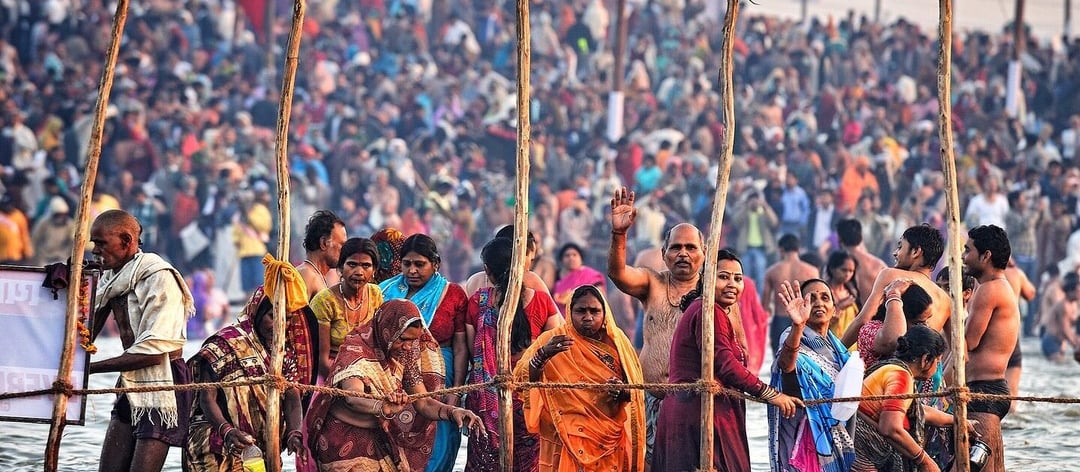Economic and Social Impact of the Mahakumbh


The Mahakumbh Mela, held every 12 years, is not only a monumental religious gathering but also a significant driver of economic and social transformation. Its impact extends far beyond spiritual dimensions, influencing the local and national economy while fostering social cohesion and cultural exchange. With millions of pilgrims and tourists congregating at Prayagraj during the event, the Mahakumbh generates multifaceted benefits that resonate across various sectors.
Boost to Local Economy:
The Mahakumbh serves as a major economic stimulus for Prayagraj and its surrounding regions. Local businesses, including hotels, guesthouses, restaurants, and transportation services, experience a surge in demand. Temporary accommodations, eateries, and makeshift shops spring up to cater to the influx of visitors, creating numerous short-term employment opportunities.
Tourism Revenue:
The Mahakumbh attracts not only domestic pilgrims but also international tourists and researchers. This influx contributes significantly to tourism revenue. Travel agencies, tour operators, and guides benefit from increased activity, and the local government generates substantial income from permits, taxes, and fees related to the event.
Infrastructure Development:
Hosting an event of such magnitude necessitates large-scale infrastructure development. Roads, bridges, sanitation facilities, and public transport systems are upgraded or newly constructed to accommodate the millions of attendees. These improvements have a lasting impact on the region, enhancing its connectivity and accessibility long after the event concludes.
Cottage Industries and Handicrafts:
Local artisans and vendors find a lucrative market during the Mahakumbh. Traditional crafts, souvenirs, religious paraphernalia, and regional specialties witness high sales, promoting cultural heritage while boosting small-scale industries.
Cultural Integration:
The Mahakumbh serves as a melting pot of cultures, bringing together people from diverse backgrounds, castes, and regions. This confluence fosters unity and mutual understanding, reinforcing the idea of a shared spiritual and cultural heritage.
Community Building:
The massive coordination required for the Mahakumbh strengthens community bonds. Volunteers, government agencies, and non-governmental organizations collaborate to manage logistics, ensure safety, and provide services. This collective effort highlights the power of cooperation and civic responsibility.
Promotion of Spiritual Values:
The Mahakumbh reinforces spiritual and moral values by providing a platform for discourses, meditation, and rituals. These activities encourage introspection, personal growth, and a sense of purpose among participants.
Global Recognition:
The Mahakumbh’s scale and significance attract global attention, showcasing India’s rich cultural and spiritual heritage on the world stage. This recognition enhances national pride and encourages cultural diplomacy.
Challenges and Opportunities:
While the event brings numerous benefits, it also poses challenges such as crowd management, environmental impact, and strain on resources. Addressing these challenges presents an opportunity for innovation in sustainable practices and efficient administration.
Conclusion
The Mahakumbh is a transformative event with profound economic and social implications. It invigorates the local economy, strengthens social ties, and projects India’s cultural identity globally. By effectively managing its challenges, the Mahakumbh can continue to serve as a beacon of spiritual and societal harmony.
Contact Us
Address
237A Rasulabad Ghat road Teliarganj Uttar Pradesh 211004
Contacts
+919236056654
mahakumbhdarshnam@gmail.com
